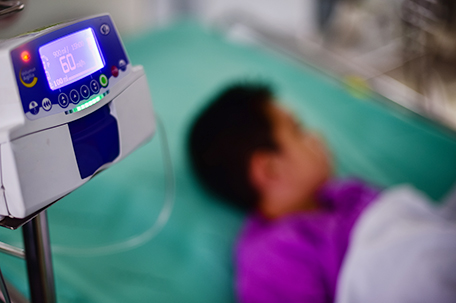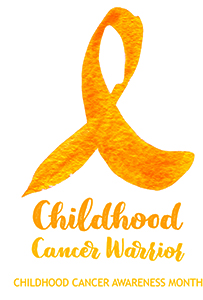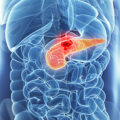
The types of cancers that develop in children are often different from the types that develop in adults. Most adult cancers are linked to lifestyle-related risk factors or other environmental risk factors that lead to DNA damage over time. The causes of most childhood cancers are not known. They are not caused by choices or environmental factors and only a small number of childhood cancers are caused by an inherited mutation.
Even when kids have a cancer type that adults get too, it is often treated differently. In addition, children have their own emotional needs that must be taken into consideration so they can get the best care.
Cancer types
The most common childhood cancer is leukemia. There are several types of leukemia, including acute lymphocytic leukemia (ALL) and acute myeloid leukemia (AML), which start in the bone marrow or blood. Leukemia may cause bone and joint pain, fatigue, weakness, pale skin, bleeding or bruising, fever, weight loss, and other symptoms. Other cancer types that can occur in children include:
- Brain and other central nervous system tumors
- Neuroblastoma
- Wilms tumor (a type of kidney cancer)
- Lymphoma (including both Hodgkin and non-Hodgkin)
- Rhabdomyosarcoma (a cancer that starts in muscle cells)
- Retinoblastoma (a type of eye cancer)
- Bone cancer (including osteosarcoma and Ewing sarcoma)
Children can also develop other types of cancer. Rarely, these can include cancers that are much more common in adults.
Other signs and symptoms of cancer in children include an unusual lump or swelling, an ongoing pain in one area of the body, limping, frequent headaches (often with vomiting), and sudden eye or vision changes.
Children need special care
An estimated 10,270 children under age 15 in the US will be diagnosed with cancer in 2017. Most of them will be treated at a pediatric medical center by a team of experts in pediatric oncology. Most pediatric centers also have psychologists, social workers, nutritionists, therapists, educators, and other specialists who can support the entire family.
Coping with cancer diagnosis and treatment is different for every child. Talk with the health care team about what works best for your child’s age group. Parents also know what works bests for their child and can share their ideas with the health care team to create a plan for helping them.
Here are some basic ideas to help children of all ages:
- Parents can help by talking to their children in age-appropriate ways about what is happening and repeating those explanations often.
- Encourage your child to express how they feel. There are specialists at many hospitals for children who know how to help children of different ages using play, artwork, or journals.
- Parents can try to maintain regular routines and rules, as much as possible. Feeling that some things stay the same when so many other things are changing is comforting for children of all ages.
- Encourage children to stay connected with friends and other caregivers during treatment while they are in the hospital or not able to participate in favorite activities. See if friends or extended family can communicate through email or other online tools. Many hospitals also have activities that help them to connect children with peers who are also going through cancer treatment.
- Talk with your health care team about when your child can return to school. Some children will be able to go to school off and on during treatment. Some pediatric centers have teachers in the hospital to help children with school work during clinic visits and hospital stays.
- Remember to take time for brothers and sisters. They need age-appropriate explanations of what is happening and time with their parents.
- Talk with nurses, social workers, and other parents of children with cancer about your emotions and ways to cope. Children will cope better if their parents are getting enough support.Long-term effects
 Children’s cancers tend to respond better than adult cancers to treatments such as chemotherapy, and more than 80 percent of children with cancer now survive 5 years or more. However, responses to treatment and survival rates differ depending on the type of cancer and other factors. And cancer treatments can cause long-term side effects, so children who have had cancer will need careful follow-up for the rest of their lives.
Children’s cancers tend to respond better than adult cancers to treatments such as chemotherapy, and more than 80 percent of children with cancer now survive 5 years or more. However, responses to treatment and survival rates differ depending on the type of cancer and other factors. And cancer treatments can cause long-term side effects, so children who have had cancer will need careful follow-up for the rest of their lives.
Risks for late effects of cancer treatment are specific to each child and are determined by a number of factors, such as the type of cancer, the specific cancer treatments and doses used, and the child’s age at the time of treatment. Some side effects don’t show up until months or years after treatment ends. That’s why they are sometimes called late effects or long-term outcomes. If your child is being treated for cancer, it’s important to discuss what these possible effects might be with your child’s medical team. Some possible late effects of cancer treatment include:
- Heart or lung problems (due to certain chemotherapy drugs or radiation therapy)
- Slowed or delayed growth and development (in the bones or overall)
- Changes in sexual development and ability to have children later in life
- Learning problems
- Increased risk of other cancers later in life
Parents of newly diagnosed cancer patients may naturally tend to focus on getting through the treatment itself. But information about late effects is important, and parents should pay attention to the doctor’s explanation of their child’s individual risk. If the doctor doesn’t bring up anything about late effects, parents should ask about it.
Make a follow-up plan
Once treatment is finished, the health care team will set up a schedule for regular follow-up exams and tests. As time goes by, the risk of the cancer coming back goes down, and doctor visits might be needed less often. But they are still important because some side effects of treatment might not show up until years later.
To help raise awareness of late effects and improve follow-up care of childhood cancer survivors throughout their lives, the Children’s Oncology Group (COG) has developed long-term follow-up guidelines for survivors of childhood cancers. These guidelines can help you know what signs and symptoms to watch for, what types of screening tests should be done to look for problems, and how late effects can be treated.
















Leave a Comment